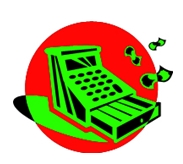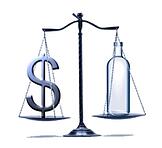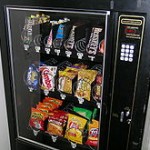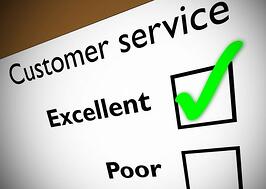Part 1 of 2: Improving Profitability Through Proper Planning and Quality Control
 Money losers in a bar come in many forms, and you will want to check your financial records carefully to make sure that you are not being affected by one of these:
Money losers in a bar come in many forms, and you will want to check your financial records carefully to make sure that you are not being affected by one of these:
- No plan. Many bar owners have no clear plan of where their bar is headed and what they need to purchase and do to get there. Many say "I only want to run a bar." However, running a bar, like anything else, is a goal, and goals always require a plan. You should know where you will be expanding and how. You should know what products you need to order and when. Keeping everything on paper in the form of a business plan and purchase orders can help make it clear to you.
- Lack of local products. Many bar managers will justify their lack of local beer by stating that their bar's style or type does not call for local beer. In fact, local beer and local food products are often the best-selling items in any bar. Many customers like or support the local beer, and visitors from other areas are often eager to try the local fare. Always offer local products, even if your bar has a uniquely international or exotic theme. As an added bonus, local products are often easier and less expensive to ship and buy, ensuring higher profit on your initial investment.
- Spoiled food and drinks. Spoiled product is lost profit. In some cases, such as a major power disruption, this can be hard to avoid. In most cases, though, spoilage is caused by ordering too much. This is avoidable. Keep track of your inventory and past purchasing patterns and buy those products that you need in the quantities they were needed in the past. Frequent checks on inventory tell you when you are running low and when you need to stock up on certain products.
- Cutting corners on quality. Many bar managers use a variety of ways to reduce quality. In many cases, they do this not to consciously deprive customers, but out of the mistaken belief that low quality costs less. They think that offering less for more will result in larger profits, when, in reality, cutting corners usually keeps customers from coming back. Quality products—be it fresh fruit in drinks, generous portions of drinks, or pleasant bathrooms—will bring the types of repeat customers who will ensure that you make money.
- Staffing problems. There are many staffing problems that can cost you money. Hiring or keeping unqualified or unproductive staff (because they are friends or family members, for example) is terrible for your bottom line. Selecting the wrong staff is a problem that can cost you a lot of money.
- Poor storage, wrapping, and handling of liquor and foods. Beer that is left out to get warm, meat that is thawed and allowed to spoil, and food and drinks that are incorrectly handled can mean waste or even food poisoning for your customers. You do not want the health department investigating your bar for poor management of food and drink. Make sure that you control how food and drinks are stored and handled. Food and drink preparation areas should be clean, and staff should keep all products that need to remain cold in the refrigerator or freezer. Food and drinks should be stored and served at their appropriate temperatures to ensure that your customers stay safe.
- Poor attitude or atmosphere. Customers want a place where they can relax and get great service. If your bar is unpleasant, you will lose money by losing customers. You need to make sure that your bar is an inviting place not only to drink and eat, but also to linger.
- No customer concern or no customer market research. Bar managers are busy people, and while they may not overlook customers on purpose, far too many lose sight of bar patrons as they worry about the many other elements of running a bar. Not catering to customers, however, can ensure that a bar will lose a lot of money. Not only will unsatisfied customers not return, but they will often share their experiences with other people—potential patrons. In order to avoid losing money, it is important for bar managers to not only please customers, but to impress them enough to make them wish to return. Regular market research will reveal not only who your bar's customers are, but also what they want.
This article is an excerpt from the The Professional Bar & Beverage Managers Handbook: How to Open and Operate a Financially Successful Bar, Tavern and Nightclub, authored by Douglas Robert Brown, published by Atlantic Publishing Group. This excerpt has been reprinted with permission of the publisher. To purchase this book go to:

 The savvy bar manager knows how to maximize profits and get the most sales possible without sacrificing ethics or drink quality. You can do the same if you follow a few simple tips. One simple way to maximize profits is by offering promotions or discounts. The small cost factor involved in initiating these promotions make them a good promotional vehicle.
The savvy bar manager knows how to maximize profits and get the most sales possible without sacrificing ethics or drink quality. You can do the same if you follow a few simple tips. One simple way to maximize profits is by offering promotions or discounts. The small cost factor involved in initiating these promotions make them a good promotional vehicle. Another way to maximize spending, and your bar's profits, is with bar tabs. Bar tabs make it easier for customers to spend without hassle, encouraging multiple orders of drinks. To allow bar tabs or not is a policy that can be debated from both sides with sound reasoning. Many bars and restaurants have been victimized by customers who walk out and do not pay their tabs. A policy of no bar tabs will alleviate the initial problem, but it will certainly be inconvenient—and possibly insulting—to some customers.
Another way to maximize spending, and your bar's profits, is with bar tabs. Bar tabs make it easier for customers to spend without hassle, encouraging multiple orders of drinks. To allow bar tabs or not is a policy that can be debated from both sides with sound reasoning. Many bars and restaurants have been victimized by customers who walk out and do not pay their tabs. A policy of no bar tabs will alleviate the initial problem, but it will certainly be inconvenient—and possibly insulting—to some customers. There are many bars that go out of business each year. This is because the market for new bars is a challenging one. If you are in an area that has new bars opening all the time and a clientele who is always seeking the latest thrill, you need to work extra hard to ensure that your establishment stays exciting enough. There are many small details that can mean the difference between a bar that is merely surviving and one that is prospering beautifully. In this chapter, you will learn the small details that can push your success higher than ever. Not all of these tips are expensive. Many take only ingenuity and some effort, but the results can be spectacular!
There are many bars that go out of business each year. This is because the market for new bars is a challenging one. If you are in an area that has new bars opening all the time and a clientele who is always seeking the latest thrill, you need to work extra hard to ensure that your establishment stays exciting enough. There are many small details that can mean the difference between a bar that is merely surviving and one that is prospering beautifully. In this chapter, you will learn the small details that can push your success higher than ever. Not all of these tips are expensive. Many take only ingenuity and some effort, but the results can be spectacular! Industry studies have consistently shown that a full 25% to 30% of a bar's liquor inventory never converts into registered sales. That is the equivalent of about six to eight 1.25 oz portions per bottle (which should yield at least 25 portions.) This loss of liquor volume--due to unauthorized comps, over-pouring, spillage or theft--should be of great concern to any bar manager.
Industry studies have consistently shown that a full 25% to 30% of a bar's liquor inventory never converts into registered sales. That is the equivalent of about six to eight 1.25 oz portions per bottle (which should yield at least 25 portions.) This loss of liquor volume--due to unauthorized comps, over-pouring, spillage or theft--should be of great concern to any bar manager.  Sensitive pricing can make or break your operation. Pricing decisions should never, ever, be made arbitrarily. It is crucial to achieve that fine balance between pricing for optimum profits and making customers feel that they're getting value for money. Of course, you want to sell the drinks at their optimum sales volume, but if you tip the balance by raising the sales price too high, the sales volume will actually drop. So will the profits.
Sensitive pricing can make or break your operation. Pricing decisions should never, ever, be made arbitrarily. It is crucial to achieve that fine balance between pricing for optimum profits and making customers feel that they're getting value for money. Of course, you want to sell the drinks at their optimum sales volume, but if you tip the balance by raising the sales price too high, the sales volume will actually drop. So will the profits. When you design your service area, it's important to realize that every step a bartender takes in the serving of a drink is costing you money and making your customers impatient. Where does your staff need to walk to get a clean glass? How far from there to the ice bins and then to the spirit dispenser? And where are your soda guns in relation to the bottles? Is the cash register yet another trip away from the customer? Even if your bartender has to take only four or five steps between each of these posts, consider how far that means your bartender has to walk in the course of serving 500 drinks a night! This is bad enough for a solo bartender, but when two or three people are working behind the same bar and sharing facilities, it can be an unproductive nightmare.
When you design your service area, it's important to realize that every step a bartender takes in the serving of a drink is costing you money and making your customers impatient. Where does your staff need to walk to get a clean glass? How far from there to the ice bins and then to the spirit dispenser? And where are your soda guns in relation to the bottles? Is the cash register yet another trip away from the customer? Even if your bartender has to take only four or five steps between each of these posts, consider how far that means your bartender has to walk in the course of serving 500 drinks a night! This is bad enough for a solo bartender, but when two or three people are working behind the same bar and sharing facilities, it can be an unproductive nightmare.

 By Chris Parry
By Chris Parry
